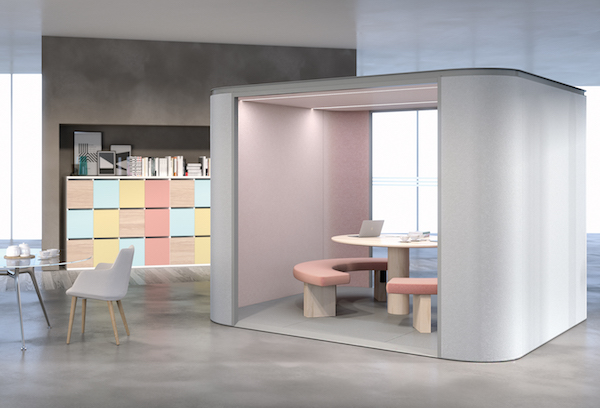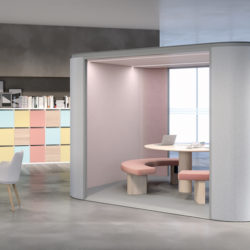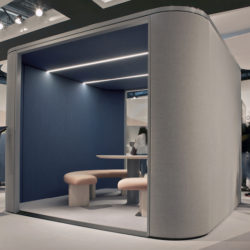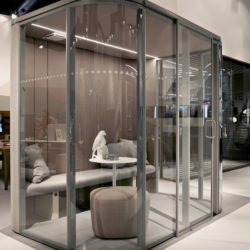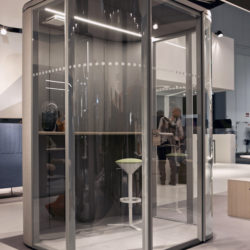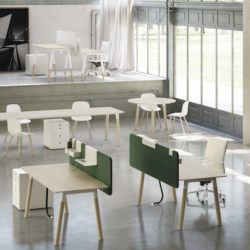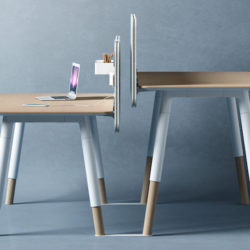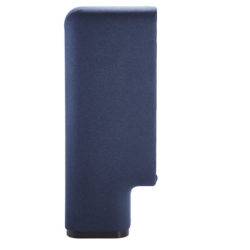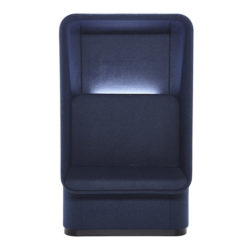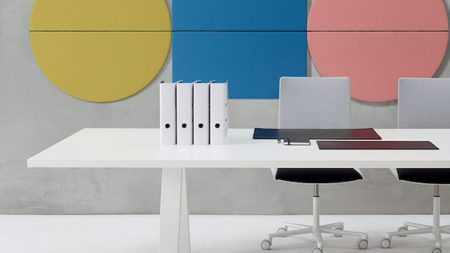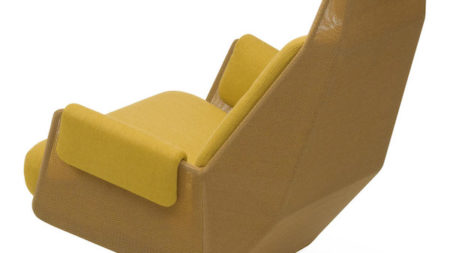
People appreciated two very interesting products presented at Salone del Mobile in Milan (Collaborative Room di Estel e Woods di Fantoni) designed by Metrica, while Boccaporto, designed for Koleksyion was awarded at NeoCon and Orgatec.
Metrica is a design studio based in Milan with an international reputation.
Their approach to contemporary furniture design consists of a strong mix of design management and technical advisory.
WOW meets Robin Rizzini, chief designer & partner, and Lucio Quinzio Leonelli, president & managing partner, to know their unique “ways of designing”.
Is your design approach the same everywhere and with all kinds of companies or does the approach change to the different situations?
Each of our projects has a double soul -imagination and manufacture- and the design of every piece of furniture always takes into consideration its engineering.
That’s why we called out practice Metrica, which evokes ties and stimuli set by production, market and commission, we call it educated design.
Every design is shared with the customer, according to Gantt, and mainly based on two steps. The fist one is the product concept (mood boards, researches and marketing analysis); it also included sketches and technical draws, renders and 3D.
Design & Advisory: the advisory service supports design for new or existing products. It is a flexible model able to adapt to different companies.
We can also offer turnkey projects, from design to manufacture. That mostly occurs abroad and sometimes with start-up companies.
You operates on quite different design markets. Do your analyses show new users life styles and requirements by the users?
Over 50% or our designs goes to the contract market. Pieces of furniture created for public and commercial spaces (offices, museums, libraries, lounges and hotels). Users, whose taste is moulded by the thousands of images found on social media, ask for products with a recognizable look yet offering the same kind of comfort, quality and functionality of a house decor.
How has the workspace vision changed in the past few years and have these changes an impact on the new interior design and furniture products?
What has actually changed is the request for private places for concentration however not excluding light and shared open plan workspaces. The outcome is furniture looking like micro-architectures: collaborative rooms, private offices, hubs, seating like workplaces for informal meetings.
What scenarios and evolutions do you expect for the office and the ways of working in the near future?
Flexibility. “Responsive Space” suiting all the user’s changeable requirements. Waiting rooms that can transform in meeting room or individual workplaces; meeting rooms that can transform in shared offices.
Captions
1 Estel, Collaborative Room, design Metrica.
They are modular cells available in three different range of dimensions, all highly customizable by structure and finishes. Small (able to accomodate up to 2 people); Medium (suitable for meeting and focus group up to 4 people); Large (a real meeting area able to host up to 8 people). They are built with an aluminium structure, customizable with glass sheet or wooden panels covered up with sound absorbing foam. Entrance module with hinged or sliding door or without a door.
2 Fantoni, Woods, design Metrica.
A complete series of tables designed for the contract market and specifically for a dynamic working environment. The key feature of the project is the use of wood that accompanied to the comfort offered by the sit-stand table. The design of the leg gives the table a simple and sophisticated look, comprising two telescopic cylindrical elements, one of which is in wood. Inside, an electronic mechanism effortlessly adjusts the height of the table top.
3 Koleksiyon, Boccaporto, design Metrica.
A single freestanding seating unit designed for the contract market able to create a small hideout that interacts with the surroundings space, either be public or office. The upholstered and soundproof shell with integrated recharge and lighting facilities.
4 Arper, Cross, design Metrica.
A table equally suited for residential spaces, boardrooms and collaborative working environments. Thanks to optional configuration arrangements, it offers a flexible and supportive workspace. Its substantial length, both minimal and architectural, features a sturdy structure with a generous surface that can serve as a temporary meeting ground for group gatherings or a wide co-working station.
5 Intertime, Mesh, design Metrica.
A reclining lounge chair designed for the residential market. It is made out of a tubular steel frame dressed in a 3D mesh fabric combined with the textiles and leathers of the seating element. These elements are held together by a crafted mechanism that enables the chair to recline and the integrated footrest.

